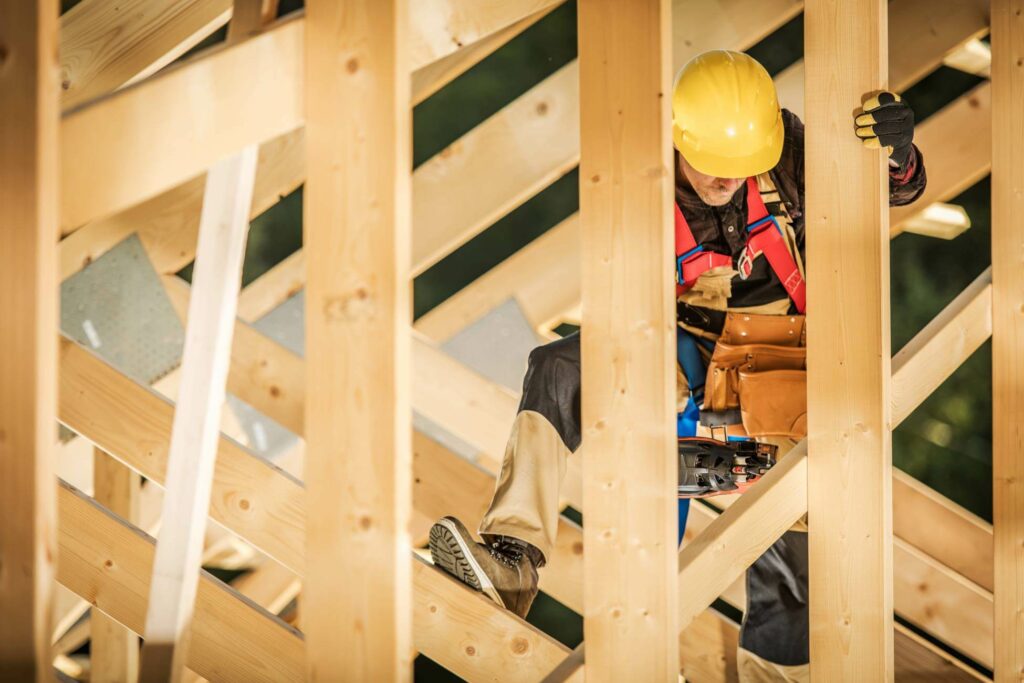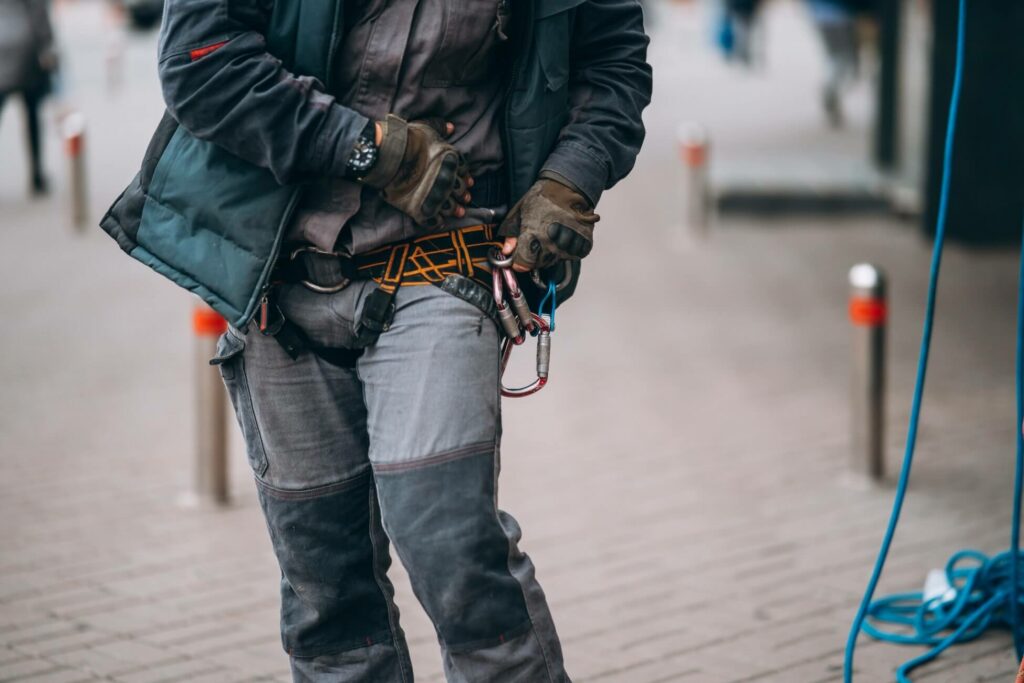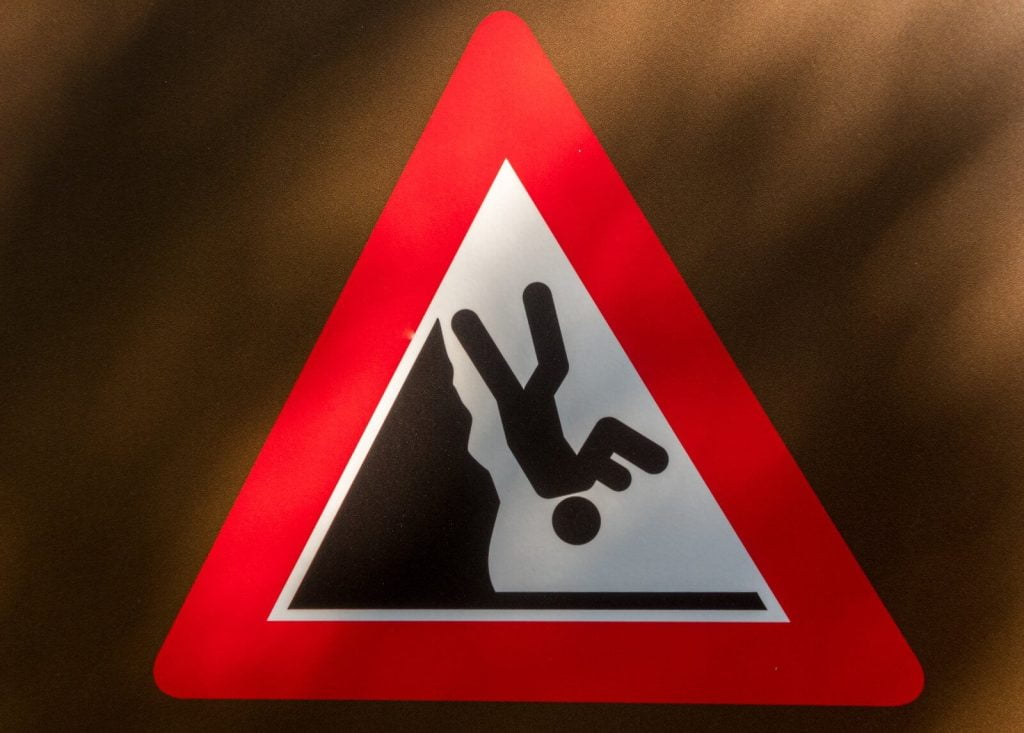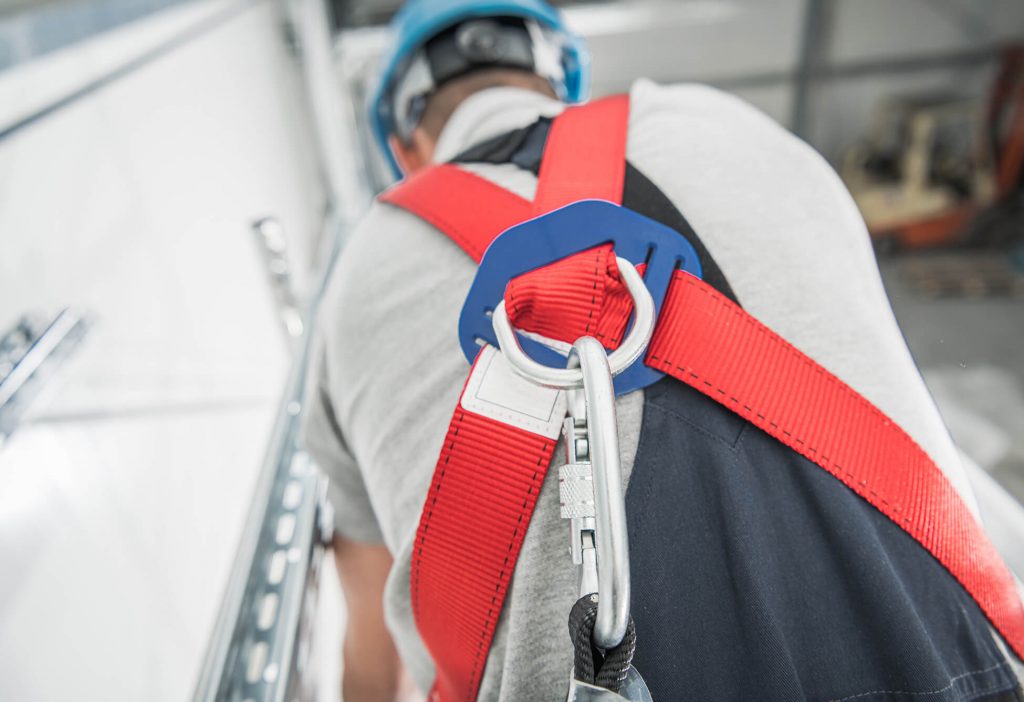This is how to protect your workers from fall hazards in 2024
Practical tips, products and laws and regulations.
Falls at height are one of the most common causes of serious workplace accidents.
As a supplier of personal protective equipment (PPE), we are committed every day to preventing fall hazards in our customers' workplaces. We do this by providing advice and training and supplying PPE.
On this page you can read about fall hazard, the risks and measures that you can take to prevent falls.
What is fall hazard?
Fall hazard is the risk of falling from height and sustaining serious injury in the process. This can happen, for example, when working at height, such as on a ladder, on scaffolding or on a roof.
Falls at height are one of the most common causes of serious workplace accidents. It is therefore important to take sufficient measures to prevent fall hazards.
Advice on risks, measures and the right PPE around fall hazards? Contact an adviser from Wijngaarden VeiligGoed without obligation. For all contact details, please refer to our contact page.

Fall hazard legislation
In the Netherlands, there is Specific legislation drafted to protect workers from fall hazards. The Occupational Health and Safety Act obliges employers to identify and assess occupational health and safety risks. If there are fall hazard, then employers should take measures to reduce this risk.
This can be done, for example, by installing fall protection, using personal protective equipment, such as a harness or safety helmet, and training employees in working safely at height.
Wijngaarden VeiligGoed not only supplies PPE, but also knowledge. For example, we provide our customers with trainings to staff on the proper use of protective equipment and workplace rules.
Risks of falling at height
The risks of falling at height are high. A fall from height can lead to serious injuries, such as broken bones, brain injuries and, in the most tragic case, even death.
In addition, the long-term effects of a fall can be noticeable. Examples include permanent injury or psychological symptoms, such as fear of working at height.
Measures to prevent falls
There are several measures employers can take to prevent fall hazards. One important measure is the installation of fall protection. Fall protection can consist of a trellis, guardrail or edge protection.
Use can also be made of personal protective equipment, such as a harness, safety helmet and safety shoes. It is important that these resources are properly maintained and regularly checked for wear.
Besides using fall protection and personal protective equipment, it is also important to properly train employees on how to work safely at heights. This should include proper erection and dismantling of scaffolding, working safely on a ladder and using lifting and hoisting equipment.
Also, employees at the height should always be alert and aware of the risks. For example, they should never lean over the edge of a platform or scaffolding, never stand on a chair or table to reach higher areas and should always ensure adequate grip and stability while working.
To ensure that the measures taken against fall hazards are effective, it is important for employers and employees to work together and to regularly check whether the measures taken are still adequate. This can be done, for example, by holding toolbox meetings, carrying out risk assessments and evaluations and organising safety training.

Personal protective equipment fall hazard
As a supplier of personal protective equipment (PPE), Wijngaarden VeiligGoed offers a wide range of fall protection products to protect workers from fall hazards in the workplace. Four key products are highlighted below:
- Positioning;
- Rope access;
- Lanyards;
- Fall protection.
Position
Positioning is a form of fall protection that allows workers to work safely at height while allowing them freedom of movement.
This is done by means of a harness belt attached to a safety line, enabling workers to position themselves at a certain height. This is important, for example, when maintaining wind turbines or high-voltage pylons.
Wijngaarden VeiligGoed can supply various types of harnesses, safety lines and other accessories for safe and efficient positioning.
Rope access
Rope access is a specific technique for working at height where the employee goes down or up on a rope. This technique is mainly used when working on facades, bridges, and other structures at height where the use of a ladder or scaffolding is not possible.
Wijngaarden VeiligGoed offers various types of ropes, harnesses and other accessories specifically designed for rope access.
Lanyards
A lanyard is a safety line used to connect a worker to an anchor point or fall protection system. Lanyards are often used in conjunction with a harness and can be attached to a safety line or anchor point to restrict the worker's freedom of movement and thus reduce the risk of falling.
Wijngaarden VeiligGoed offers various types of lanyards suitable for different applications and working conditions.
Fall protection
Wijngaarden VeiligGoed offers a wide variety to fall protection products that comply with applicable laws and regulations and are designed to ensure worker safety.
View the offer of Wijngaarden VeiligGoed
Wijngaarden VeiligGoed has a very wide range and warehouse. As a result, our products are almost always available directly from stock.
Curious about Wijngaarden VeiligGoed's products, take a look at our catalogue loop. Want to speak to an advisor? Then contact us.

Frequently asked questions on fall hazards
What does fall risk mean and why is it important?
Fall hazard refers to the risk of falling from height, which can lead to serious injuries or even death. It is crucial for workplace safety, especially in occupations where working at height is prevalent.
What measures can an employer take to reduce fall hazards?
Employers can reduce fall hazards by installing fall protection such as guardrails and railings, using appropriate personal protective equipment, and providing regular safety training and assessments to workers.
What are some examples of personal protective equipment against fall hazards?
Examples of personal protective equipment include harnesses, safety helmets, safety shoes and lanyards. These devices restrict the worker's freedom of movement at height and reduce the risk of falling.

Our advisors are happy to help you or make an appointment if you wish.
Phone: +31 184 434 455
Mail: info@veiliggoed.nl
